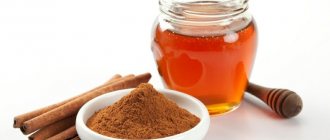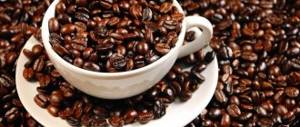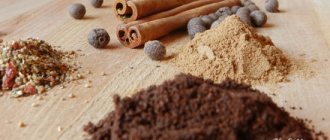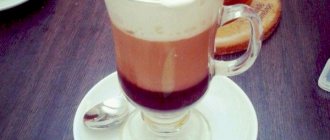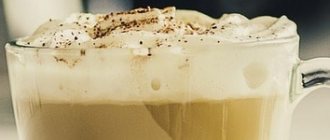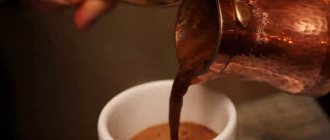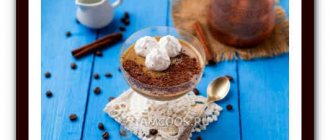The birthplace of coffee is Ethiopia, then the drink began to be prepared in Egypt and Yemen, from where it was brought to the Middle East and Europe. It is widely believed that the tradition of brewing coffee was brought to us by Peter I, a great lover of everything new. Earlier sources mention the drink, but the taste and aroma of coffee in Russia was really appreciated only in the second half of the 17th century.
The Turks were and remain true coffee connoisseurs; they developed many recipes, perfected the art of coffee brewing, and began adding spices to the drink. They also came up with the idea of preparing coffee in a special vessel - a cezve.
What is Turka
Turkish coffee is brewed in cezves - pear-shaped metal vessels with a narrow neck, thick bottom and long handle. The cezve began to be called Turkish in Russia because of its origin.
At the Sultan's court, the merits of the new drink were appreciated; coffee for the ruler was brewed in golden saucepans with a capacity of one serving. The grains were ground in front of the Sultan, and the dishes with a hot drink were immediately served to the table. Coffee was prepared over coals; if it boiled over, the aroma was spoiled. By order of the Sultan, a vessel made of tinned copper with a thick bottom was invented. Copper takes longer to heat up than gold, the narrow neck does not allow the aroma to dissipate, the cooking process is prolonged, and the drink has time to be imbued with the taste and strength of the ground grains.
What is coffee with chocolate called?
Coffee with chocolate has a long history, and there are also several names under which it is found.
For the first time, 2 invigorating, savory ingredients were mixed in Latin America, later the drink spread to European countries, and from there throughout the world.
The South American name “mocha” or “mocha” (Italian caffe mocha) appeared - initially derived from an Arabica variety with a chocolate aftertaste, in honor of the Yemeni port of Al Mokha, from where it was delivered.
In Europe, this drink is often called “mochaccino” or “moccocino” (Italian: mocaccino) - a type of cappuccino with chocolate chips, syrup or topping.
Regardless of the name, this coffee-chocolate cocktail is served in large transparent glass cups and consumed according to standards through a straw.
According to the standards, it is considered unacceptable if espresso or milk foam appears from under the head of cream.
Decorations can be cocoa powder, cinnamon, chocolate syrup, and from time to time - pieces of marshmallows or a scoop of ice cream.
Some people prefer to mix all the ingredients, while others, on the contrary, try everything separately in order to alternately feel the bitterness of strong coffee, the sweetness of melted tiles, and the tenderness of whipped cream.
Turin coffee with bitter chocolate is called “bicherin”. This word appeared together with the drink in the 18th century in Piedmont, an administrative region of Italy. His admirers included Ernest Hemingway and Pablo Picasso. Bicherin is a layered dessert drink made from bitter dark chocolate melted with whole milk, a layer of espresso, and a top of whipped cream. Usually served topped with fresh mint.
At first, the coffee-chocolate cocktail was consumed in the morning after breakfast or instead of it. Nutritious and energetic, this morning drink increases tone, perfectly awakens, and increases cognitive properties.
At the moment, different versions of mochaccino can be found on the menu of many coffee shops or can be prepared at home without the help of others. It is served as a dessert after lunch, a proper snack within a busy schedule, or at the end of the working day to boost your mood.
It is recommended to refrain from such a combination only in case of personal allergies or for people who are closely watching their weight (the composition of chocolate and cream adds extra calories), as well as for pregnant and lactating women and children.
Which type of coffee to choose
Only two of the more than sixty varieties of coffee are of interest to coffee lovers - Arabica and Robusta.
Arabica originates from Ethiopia, but is now cultivated in different parts of the world with suitable climates. Robusta was once discovered in the Congo and spread throughout the tropics of Africa, Indonesia, Vietnam and other countries.
The Arabica variety is more popular because it has a rich taste, aroma and pleasant softness. Robusta has a sharp and bitter taste, which is liked by lovers of strong coffee. Brown Arabica beans are mixed with black robusta in various proportions and get interesting flavors, the desired strength, rich aroma and thick foam on the surface of the coffee.
Health benefits of coffee with chocolate
If you use natural, high-quality ingredients, coffee with chocolate prepared according to any recipe is not only tasteful, but also beneficial for your health.
One or two glasses during the day improve the functioning of the stomach. The calorie content of the drink will provide you with the necessary boost of strength and energy.
The tandem of coffee and chocolate, in addition to vigor, gives a feeling of pleasure, because the second produces a pleasure hormone in our brain.
How to make chocolate coffee. Video
How to brew Turkish coffee: useful tips and tricks
Since the creation of Turks, many models of coffee makers and coffee machines have been created, but Turkish coffee on a regular gas or electric stove has a unique charm that Americano and espresso cannot compare with. Before brewing coffee in a Turk, you should understand some of the intricacies of the process.
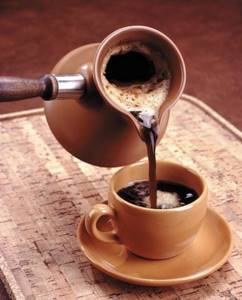
The finest grind
Coffee prepared on the stove will retain its beneficial properties as much as possible if you grind the beans almost to powder. Not only the thick consistency and aroma of the drink, but also the density of the foam on the surface depends on grinding. A modern home coffee grinder is suitable for grinding; you need to grind the beans before cooking, and not for future use - when stored for a long time, ground coffee loses its aroma.
Water quantity and quality
The water must be unboiled and clean, filtered. Chilled boiled water is not suitable - this has been tested many times in practice. Pour water up to the neck of the turk, leaving room for foam.
Fire intensity
Turkish coffee at home should be brewed over very low heat. The drink should not boil violently - this will kill the taste and aroma.
Salt and sugar
Sugar, dropped into the cezve at the beginning of preparation, fully reveals the taste of the coffee, helps the foam form, but slows down the process a little. Several salt crystals perform the same task.
Cooking time
You can brew coffee in a Turk on a gas stove until the foam begins to rise. Do not let it boil, otherwise the essential oils will be destroyed.
Ground coffee portion
To prepare a standard 100-gram cup of coffee, one or two spoons of ground coffee is enough. It’s not worth adding more - the taste will not become richer, but bitterness will appear.
Foam
Making Turkish coffee at home requires the formation of foam, which prevents the aroma from evaporating. The foam will be dense if you let it rise a little several times and immediately remove it from the heat. As soon as the foam begins to settle, return the Turk to the stove. It is better not to stir the coffee while brewing so as not to disturb the barrier that preserves essential oils.
Methods and features of making coffee with chocolate
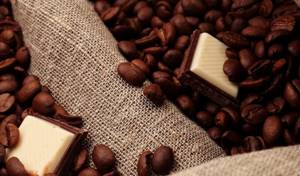
In order for you to get a truly tasty drink, you should know some cooking features. After all, each ingredient has its own requirements that must be observed regardless of the cooking method.
Coffee. Main ingredient. Only natural coffee is used. Usually in coffee shops they prepare espresso using a coffee machine, but coffee brewed in a Turk is no worse, and even better for making a cocktail. In order to get a bright and rich aroma, you need to grind coffee beans before cooking.
Chocolate. Only a natural, high-quality product is taken, which must be carefully and leisurely melted in a water bath. At the same time add a little milk or cream to it. Melt until a thick mass is obtained so that the layer becomes dense.
Milk. Before adding it, it must be heated to a temperature of approximately 70 C. The milk must be warm, otherwise it may curdle. Sometimes it is foamed immediately before preparing a coffee-chocolate drink.
How to make coffee with foam
- To make Turkish coffee at home aromatic, the beans must be ground very finely. A serving of ground coffee per 100-150 ml of water is 2 teaspoons.
- Pour coffee and sugar to taste into the cezve, you can add a pinch of salt to enhance the taste. Fill with cold water up to the neck; the smaller the area of contact between the surface of the coffee and the air, the better the aroma will be preserved.
- Place the turk on low heat. When heated, coffee particles will rise along with the water and gather at the neck into a thin crust. When the coffee starts to boil, foam will form from the crust.
- Make sure that the coffee does not boil over. Light brown foam at the neck of the Turka indicates that the water is about to boil; this cannot be allowed to happen. Remove the Turk from the heat when you see foam.
- Spices can be added when you remove the Turk from the heat for the first time or to a ready-made drink.
- Wait half a minute and return the cezve to the fire, wait for the foam to rise. If you like very strong coffee, repeat the process another time or two.
- The coffee is ready. You can add milk, cognac, lemon, etc. to it.
- You need to pour the finished coffee into a warm cup.
Recipe 2. With chocolate
You will need: 70 ml of water, 25 g of chocolate, 150 ml of milk, 2 tablespoons of powdered sugar, freshly prepared espresso (11 g of Arabica per 150 ml of water), cane sugar to taste.
- Melt the chocolate and pour it into the bottom of the mug.
- Pour freshly brewed espresso into a mug.
- Heat the milk, beat with powdered sugar.
- Add the milk mixture to the drink and add cane sugar to taste.
Little tricks: when pouring espresso into the foam, try to let the stream flow down the very edge of the glass, so the milk foam will be right above it.
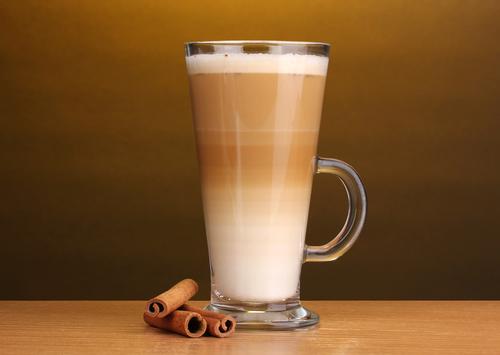
Turkish coffee and chocolate recipes
The combination of coffee and chocolate seems ideal; it has even been noted that chocolate lovers almost always love coffee. The flavors effectively complement and enhance each other, which once again confirms the harmony of the union - the bitterness of the coffee beans is softened by chocolate. Chocolate coffee began to be brewed in Latin American countries, and from there the recipes quickly spread throughout the world.
Coffee with chocolate
- Ground coffee - 2 teaspoons
- 200 ml water
- Dark chocolate – 50 g
- Salt and pepper - optional
Preparation:
- Brew coffee in a Turk.
- When the foam rises for the first time, you can add salt and pepper on the tip of a knife. The spices will bring out the flavor of the coffee, which is especially important if you are using mild Arabica beans.
- Place the cezve on the fire and wait until the foam rises again.
- Remove from heat, pour into cups and sprinkle with grated chocolate.
- Cover the cups with saucers or napkins for a few minutes to allow the chocolate to melt. Stir.
Coffee with chocolate and cinnamon
Cinnamon was the first spice to be added to coffee. The flavors go well together, although this drink has its supporters and opponents.
- 2 teaspoons coffee
- 200 ml water
- 2-3 slices dark chocolate
- 2 tsp. cream
- A pinch of ground cinnamon
- Sugar to taste
Preparation:
- Brew coffee in a cezve, adding cinnamon after the first rise of the foam.
- Melt the chocolate in a water bath.
- Add chocolate to coffee cups and pour cream.
- This coffee can be drunk hot or cold; the drink tastes similar to cappuccino.
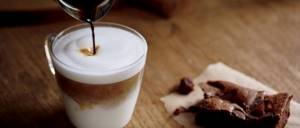
Brazilian coffee with milk and chocolate
- 4-5 teaspoons ground coffee
- Glass of cold water (200 ml)
- 180 ml milk
- Dark chocolate bar (100 g)
- Sugar
Preparation:
- Brew strong coffee in a Turkish coffee pot. Bring to a boil three times.
- Break the chocolate and melt in a water bath.
- Heat the milk and pour into the chocolate in a thin stream. Stir constantly. Beat the mixture with a whisk.
- Pour coffee into milk and chocolate.
- Add sugar to taste.
Recipe 4. White chocolate latte
You will need: 80 ml of water, 175 ml of milk, a little more than half of 1 tablespoon of ground coffee, 30 g of white chocolate.
- Pour coffee into a French press and fill it with hot water. Let it brew for 3-4 minutes.
- Heat the milk over medium heat, bring to a boil and add the chopped white chocolate. Stir for about 2 minutes until it melts. Then beat until foam appears and remove from heat.
- Pour freshly brewed espresso into glasses, add the prepared mixture, and spread the foam on top.
If the layers are not mixed during the latte preparation process, you will get a real layered coffee cocktail. With the right frothed milk consistency and espresso temperature, the layers will separate clearly, which is the first sign of the quality of the drink. If you lack experience, you can use a regular spoon to separate the layers.
For lovers of chocolate flavor, we also suggest that you familiarize yourself with recipes for coffee with cocoa.
photo: depositphotos.com/belchonock, belchonock
What is coffee with chocolate called?
This drink is popular not only in South America, but also among the general public of coffee shops and restaurants. What is coffee with chocolate called in countless menus? It takes its name from the South American name for coffee – mocha. The drink made from coffee with chocolate came to be called moccocino. The spelling options for the name can be different - moccacino, mokachino, etc.
This recipe was quickly adopted by European chain coffee shops, and at the moment it is difficult to find even a small bar or coffee shop that does not include this coffee in its assortment.
Moccacino recipe (coffee with chocolate and milk)
- Dark chocolate – 40 g
- Cream – 10 ml
- Ground coffee – 2 teaspoons
- Water – 100 ml
- Milk – 200 ml
- Sugar or syrup - to taste
Brew coffee according to the usual recipe, add sugar as needed. Leave the drink to cool. Melt the chocolate in a water bath, then add the cream and stir gently until a homogeneous mass is formed. Pour the chocolate and cream into the prepared cup or tall glass.
Warm the milk. Carefully, using a knife, pour the milk into the bowl with the chocolate. The layers should not mix, so guide the knife so that the milk slowly flows down the wall of the cup. Then carefully add coffee and syrup to the drink. It is clear that the coffee and milk layers will mix due to the similar density of the drink. If you plan to make moccacino in layers, then instead of coffee, take cream, preferably 15-20% fat. Then the density of the layers will be different, and they will mix less intensely.
In a moccacino recipe, there is always twice as much milk or cream as coffee, in other words, the drink requires 1/3 coffee component and 2/3 milk component.
Decorate the drink to your taste, for example, with whipped egg white, colored sprinkles, or chocolate chips.
Serve with a straw.
From time to time, to speed up the process, use chocolate syrup instead of chocolate. It's faster, but not tastier. Nothing compares to the smell of real chocolate.
Cool varieties of moccacino, which have become widespread in the near future, are prepared by whisking melted chocolate, milk, coffee and syrup suitable for the recipe - mint, strawberry, mango, raspberry. For extra freshness, add crushed ice. This is no longer very similar to regular coffee with chocolate, but this cocktail is perfectly refreshing and invigorating.
Recipes for making coffee with chocolate.
Often, chocolate coffee helps to cheer up, and in moments of pause it is pleasant to chat with friends, co-workers, and lovers. Affectionate and melodious coffee with chocolate sets the rhythm of life, like music.
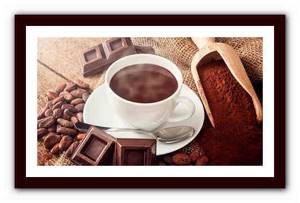
Syrups added to drinks to give them a unique taste have received enormous recognition:
The tradition of drinking coffee with the addition of hot chocolate appeared in the 18th century, and the combination of the two strongest and healthiest goods was then called “bicherin”.
Picasso and Hemingway were among the first tasters of the fantastically delicious consistency, which received a lifetime ticket. Chocolate, like coffee, is an integral part of modern culture, and bicherin is the foundation for the production of cocktails, confectionery and coffee. Thanks to a mixture of cultures fueled by the power of advertising, coffee and chocolate continue to be shrouded in the aura of something infinitely sensual.
